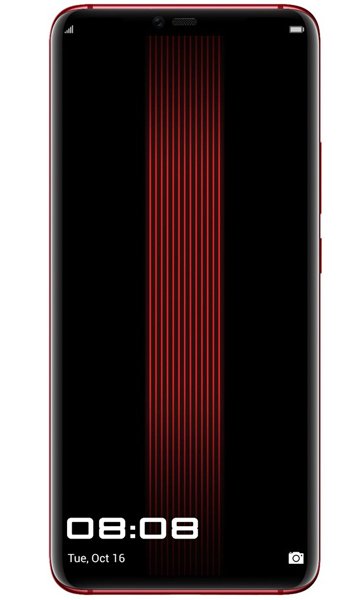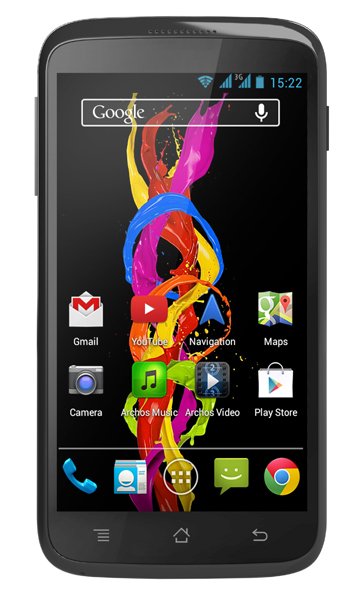Huawei Mate 20 RS Porsche Design vs Archos 40 Titanium Comparison and Differences
Smartphone 1

Huawei Mate 20 RS Porsche Design
Smartphone 2

Archos 40 Titanium
Smartphone 3
Huawei Mate 20 RS Porsche Design or Archos 40 Titanium Specs Comparison
or
 Common specs
Common specs
| Brand and model | Huawei Mate 20 RS Porsche Design | Archos 40 Titanium | |
| Rating | (+) | (+) | |
| Release date | 2018, October | 2013 | |
| Dimensions (HxWxD) | 157.8 x 72.3 x 9.7 mm | 6.21 x 6.21 x 2.85 in | 125 x 65 x 8.5 mm | 4.92 x 4.92 x 2.56 in | |
| Weight | 187 g | 6.6 oz | 124 g | 4.37 oz | |
| Body Build | Front glass, leather/glass back, aluminum frame | ||
| Case | buy from Amazon | buy from Amazon | |
| Colors | Black, Red (China only) | Black | |
| Battery | 4200 mAh, Non-removable Li-Po | 1500 mAh, Removable Li-Ion | |
| Battery life |
Stand by time - Up to 150 h Talking time - Up to 12 h (2G) / Up to 9 h 30 min (3G) |
||
| Approximate price | 1600 EUR | ||
| Check price | from Amazon | from Amazon |
 Screen
Screen
| Technology | AMOLED | TFT | |
| Touchscreen | capacitive touchscreen | capacitive touchscreen | |
| Display colors | 16M | 16M | |
| Screen size | 6.39" in | 4" in | |
| Screen area | 100.2 cm2 | 45.5 cm2 | |
| Screen format | 19.5:9 (height:width) | 5:3 (height:width) | |
| Screen to body ratio | 87.9% | 56.1% | |
| Screen resolution | 1440 x 3120 px | 480 x 800 px | |
| Screen PPI /points per inch/ | 538 PPI | 233 PPI | |
| Screen protection | Corning Gorilla Glass (unspecified version) | ||
| Other specs | - DCI-P3 -HDR10 |
||
| Screen protector | buy from Amazon | buy from Amazon |
 Camera and Video
Camera and Video
| Rear camera, main | 40 MP, Triple | 5 MP, Single | |
| Camera specs | -40 MP, f/1.8, 27mm (wide), 1/1.7'', PDAF/Laser AF -20 MP, f/2.2, 16mm (ultrawide), 1/2.7'', PDAF/Laser AF -8 MP, f/2.4, 80mm (telephoto), 1/4'', 5x optical zoom, OIS, PDAF/Laser AF |
-5 MP, AF | |
| Functions | Leica optics, dual-LED dual-tone flash, panorama, HDR | LED flash | |
| Video | 2160p@30fps, 1080p@60fps, 1080p@30fps (gyro-EIS), 720p@960fps | 720p | |
| Front camera, selfie | 24 MP, Single | 0.3 MP, Single | |
| Specifications | 24 MP, f/2.0, 26mm (wide) | VGA | |
| Functions | HDR | ||
| Video | 1080p@30fps |
 Performance
Performance
| Operating system - OS | Android 9.0 (Pie); EMUI 9 | Android 4.2.2 (Jelly Bean) | |
| Chipset | - HiSilicon Kirin 980 (7 nm) | - Mediatek MT6572 (28 nm) | |
| CPU | - Octa-core (2x2.6 GHz Cortex-A76 & 2x1.92 GHz Cortex-A76 & 4x1.8 GHz Cortex-A55) | - Dual-core 1.3 GHz Cortex-A7 | |
| GPU | Mali-G76 MP10 | Mali-400 | |
| External memory | NM (Nano Memory), up to 256GB (uses SIM 2) | microSD, up to 32 GB (dedicated slot) | |
| Internal memory | 256/512 GB, 8 GB RAM | 4 GB, 512 MB RAM |
 Benchmark
Benchmark
| Antutu 8 Total | 369372 |
 Communication and Connectivity
Communication and Connectivity
| SIM card | Single SIM (Nano-SIM)Hybrid Dual SIM (Nano-SIM, dual stand-by) | Dual SIM (Mini-SIM) | |
| Network | GSM / HSPA / LTE | GSM / HSPA | |
| Bands | -2G - GSM 850 / 900 / 1800 / 1900 - SIM 1 & SIM 2 -3G - HSDPA 800 / 850 / 900 / 1700(AWS) / 1900 / 2100 -4G - LTE band 1(2100), 2(1900), 3(1800), 4(1700/2100), 5(850), 6(900), 7(2600), 8(900), 9(1800), 12(700), 17(700), 18(800), 19(800), 20(800), 26(850), 28(700), 32(1500), 34(2000), 38(2600), 39(1900), 40(2300) |
-2G - GSM 850 / 900 / 1800 / 1900 - SIM 1 & SIM 2 |
|
| Speed | HSPA 42.2/5.76 Mbps, LTE-A Cat21 1400/200 Mbps | HSPA 21.1/5.76 Mbps | |
| GPRS | Yes | Yes | |
| Edge | Yes | Yes | |
| Wi-Fi | Wi-Fi 802.11 a/b/g/n/ac, dual-band, DLNA, Wi-Fi Direct, hotspot | Wi-Fi 802.11 b/g/n, hotspot, DLNA | |
| GPS | Yes, with dual-band A-GPS, GLONASS, BDS, GALILEO, QZSS | Yes, with A-GPS | |
| NFC | Yes | ||
| USB | 3.1, Type-C 1.0 reversible connector, USB On-The-Go | microUSB 2.0 | |
| Bluetooth | 5.0, A2DP, aptX HD, LE | 3.0, A2DP, EDR | |
| Harmful irradiation |
SAR EU - 0.44 W/kg (head) 0.73 W/kg (body) |
 Music and Audio
Music and Audio
| Radio | No | Stereo FM radio | |
| Headphone jack | No | Yes | |
| Others | - 32-bit/384kHz audio -Active noise cancellation with dedicated mic |
 Other features
Other features
| Sensors | - Face ID, fingerprint (under display), accelerometer, gyro, proximity, barometer, compass , Infrared port | - Accelerometer | |
| Other extras |
- Fast battery charging 40W (70% in 30 min) -Qi wireless fast charging 15W -Reverse wireless charging - IP68 dust/water resistant (up to 2m for 30 mins) |
Reviews and Opinions on Huawei Mate 20 RS Porsche Design and Archos 40 Titanium
If you had to recommend one of these phones to a friend, which one would it be and why? Share your arguments using the Add Opinion button!

